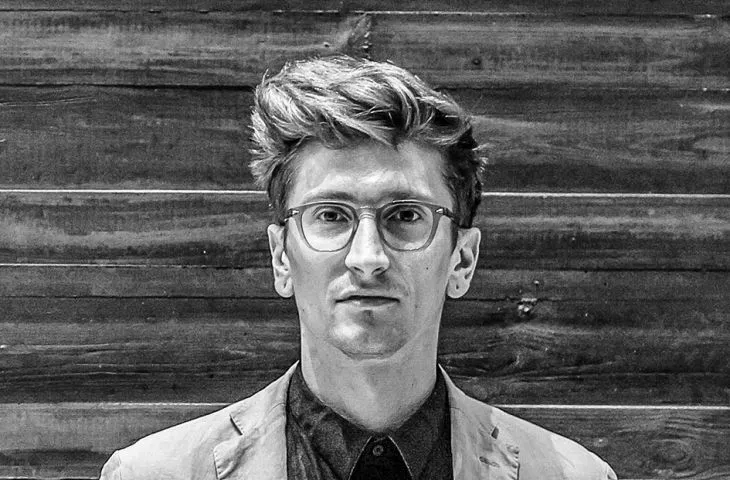Hits - flight into space, or utopians and visionaries.
I was lucky enough to see a cool exhibition in 2020 - which was not easy during the pandemic. But it was because of this grounding and my fear of flying that I switched to a car this summer, and this way I reached many places previously bypassed on my European escapades. On my way to Paris, I stopped in Nuremberg, which has a great Neues Museum dedicated to contemporary art, as well as design and architecture. I just happened to come across a very good exhibition "WHAT IF...? On the Utopian in Art, Architecture, and Design". The contexts of this exhibition - of time, or global pandemic, and of place - were interesting. In Nuremberg, I had seen a while earlier buildings being erected in honor of the "millennial" Third Reich. That dystopia is behind us, I hope. But fresh from seeing the buildings built for NSDAP rallies, including the Congress Hall or the Zeppelinfeld with its preserved tribune of honor (today, car races are held on the large field in front of it), I approached the presented utopias, which, after all, have been primarily about building an ideal society since the time of Thomas More, with all the more reserve. History, especially 20th century history, shows how easily this idea is distorted.
However, the exhibition was not a school review of utopias, and the addition of design and art broadened the meaning of the term. I thought that the famous utopias of the 1960s and 1970s that entered the architectural canon, such as the Archigram and Superstudio projects, would dominate, but there was also a strong representation from the 21st century in the exhibition. Although contemporary utopias juxtaposed with those of half a century ago appear more modest, they are often more micro-utopias or precisely dystopias, as if to confirm the words of German historian Joachim Fest, quoted in the introduction to the exhibition, that after the turn of 1989 and 1990 we are living in "the era of the end of utopias."
The work of Belgian artists Christian Kühn and Harald Trapp, which has already been seen at the 2014 Venice Architecture Biennale, "Plenum. Places of Power." It's a collection of models of all 196 national parliaments from around the world, which are presented in the form of white mock-ups at 1:500 scale, evenly taped to the wall. Could it be that democracy is a utopia? After all, behind the facades of many of these buildings are pseudo-parliaments and quasi-democracies. But even in authoritarian countries, the architecture of parliaments takes on similar classicizing forms that hark back to the origins of democracy. It is a pity that with the globalization of architecture does not go hand in hand with the globalization of certain values....
The exhibition had plenty of interesting moments. It left me with a reflection on how important it is in architecture to spin utopias, even unrealistic visions. What once seemed unrealizable, in time, thanks to technology, will become possible. In a world shaken by crises, pandemics and climate catastrophe, we have somewhat forgotten to dream of a better tomorrow. Crushed by reality, we are putting out fires, patching holes, but I think this will not solve any of our global problems. What is needed are visions, long-range plans, including some that seem unrealistic today. Like the vision from the 2010 OMA paper presented at the Nuremberg exhibition. It's "Roadmap 2050: A Practical Guide to a Prosperous, Low-Carbon Europe," which shows on a geographic map how Europe could achieve climate neutrality by the middle of this century, relying only on renewable natural resources.
Another highlight of 2020 for me was also watching the May 30 launch of the Falcon 9 rocket, which carried two astronauts into orbit. It was the first manned flight from within the United States since the shuttle program ended in 2011. All thanks to the vision and determination of Elon Musk and his company SpaceX. A dozen hours later, the Dragon 2 capsule docked with the International Space Station. The return of the rocket's first stage to the landing ship was also a feat. I don't think I've watched anything this year with such baked goods on my face as the Falcon 9 launch and then its landing on a small, wobbly platform in the middle of the Atlantic Ocean. The rocket, which had just been in orbit, returned to Earth and landed on a tiny landing pad. To do so vertically and using the thrust of its engines. This is a huge technological leap! What does this have to do with architecture? Thanks to visionaries like Musk, I believe that in our lifetime it will become possible to colonize Mars and maybe even build cities on the Red Planet. The new technologies that will be discovered on this occasion will certainly be useful in everyday life on Earth.
Never before as a civilization have we faced such great challenges. To change the world, it is not enough for us to complain or correct the mistakes made by previous generations. Simple and modest measures, building with straw and wood, are not enough. We must leap far ahead. Utopias can be one of the tools, models or scenarios for building a better world. For this we need dreamers and visionaries, people like Elon Musk. We certainly need courage and the belief that we can change the world. These profoundly human qualities led us to the environmental catastrophe, and only they can pull us out of it.
Tomasz MALKOWSKI
architecture critic, author of articles and television scripts on architecture and its history, as well as art and design

















